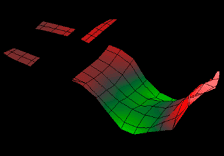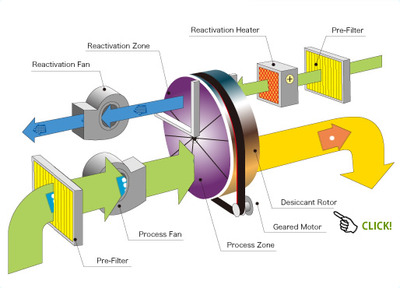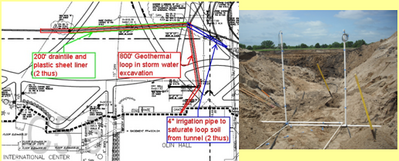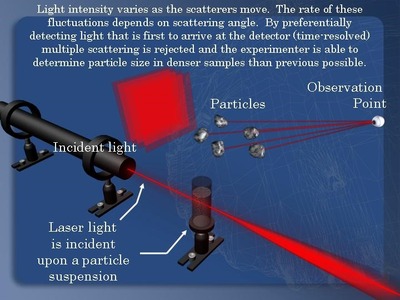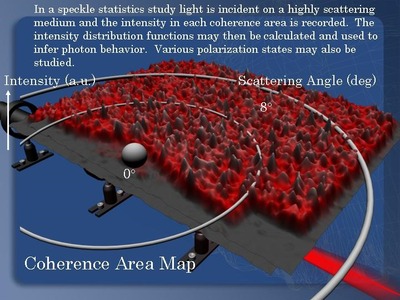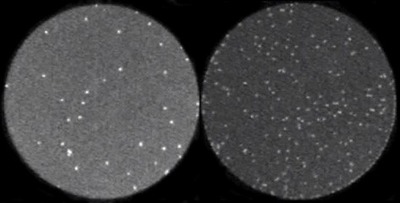Research Opportunities
On campus research opportunities are available both during the academic year and during the summer. Students may join a faculty mentor on an established project (examples below), but all physics faculty are open to new research ideas proposed by students. During the academic year, research can optionally be done for course credit. Funding for summer research is available from several sources.
Faculty Research Interests and Areas:
- Darsa Donelan: Planetary Atmospheres, Energy
- Tom Huber: Acoustics, Nuclear Physics, Computational Physics
- Steve Mellema: Nuclear Physics, Optics
- Paul Saulnier: Optics, Biophysics
Project Descriptions:
Musical Acoustics: Thomas Huber
The goal of this faculty-student research project is a more fundamental understanding of tone production in organ pipes. One instrument that we study is the reed pipe used in pipe organs. Using a recently purchased laser vibrometer, we can measure the velocity at different points on the reed. This is the first experiment that has measured the actual shape of the vibrating reed. The observation of complex vibrational modes, including include torsional and 2nd and 3rd order modes as shown, was completely unexpected. |
|---|
Zinc Bromine Flow Battery: Chuck Niederriter
The goal of this project is the development of a demonstration scale zinc bromine flow battery. A flow battery is a rechargeable fuel cell in which electrolyte containing one or more dissolved electroactive species flows through an electrochemical cell that reversibly converts chemical energy directly to electricity. Additional electrolyte is stored externally, generally in tanks, and is usually pumped through the cell (or cells) of the reactor. Flow batteries can be rapidly "recharged" by replacing the electrolyte liquid (in a similar way to refilling fuel tanks for internal combustion engines) while simultaneously recovering the spent material for re-energization. |
Desiccant Dehumidifier: Chuck Niederriter
The development of a demonstration desiccant dehumidifier is the goal of this project. The dehumidifier under construction is of the desiccant wheel type designed to dry air by passing a large volume of air (process air) through a slowly rotating Silica gel rotor. Silica gel is a hygroscopic material that absorbs moisture direct from the air. As the air passes through the rotor, the humidity of the air is reduced, while the moisture content of the rotor is increased. A smaller volume of air (reactivation air) is heated ideally by a solar panel or other renewable source of energy passes through a portion of the rotor in the opposite direction. As this heated air passes through the rotor it will “reactivate” it by removing the moisture content from the silica gel material. The reactivation air will leave the humidifier as warm, moist air and must be vented to outside of the building. Continuous circulation of the room air through the dehumidifier unit gradually reduces the relative humidity in the room. |
PV Panel Tracking System: Chuck Niederriter
The goal of this student-led project is to determine the costs and benefits of tracking on commercial size photovoltaic installations. Theoretical calculations will be compared to experimental data collected from a custom made system. |
Ground Source Geothermal: Chuck Niederriter
A home scale geothermal loop (800 foot) was installed under the new mall area between Olin and Beck Halls when it was recently renovated. Thermistor arrays and moisture sensors were also installed to study the flow of heat toward and way from the loop under various conditions. A sprinkler system allows the water content of the soil to be varied, providing a means to study the effect on the efficiency of the system. The goal is to develop a fully instrumented system for use in geology, physics, and environmental studies labs. |
Photon Correlation Spectroscopy: Paul Saulnier
Photon Correlation Spectroscopy (PCS) is a technique in which the motion of particles suspended in a fluid causes the light scattered by these particles to fluctuate in time. By analyzing these intensity fluctuations the particle size may be determined. Adding time-resolved detection enables denser samples to be probed. |
Speckle Statistics: Paul Saulnier
A speckle statistics study consists of determining the intensity distribution of light across a speckle pattern as one probes a large number speckle coherence areas. The resulting intensity distributions for various incident polarizations may be compared to help infer the photon behavior inside the highly scattering media. |
Studying Swarms in Nature: Paul Saulnier
Our biophysics research program centers on the study of the structural characteristics of swarms in nature. The characteristics of such aggregations, as a whole, may be used to infer the behavioral attributes of the individuals comprising the swarms by using radial distribution and pair-correlation functions. |
Sonoluminescence: Paul Saulnier
Sonoluminescence is the emission of ultra-short bursts of light from imploding bubbles trapped in a liquid when driven at resonance by a sound field of sufficient intensity. We have used a single acoustical horn driving a rectangular chamber at resonance to produce single bubble sonoluminescence. |
